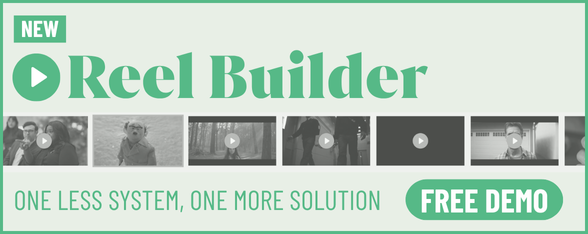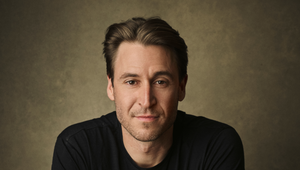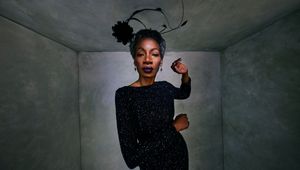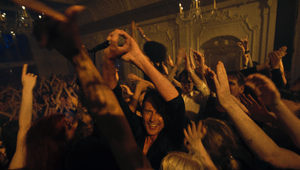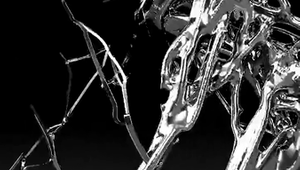
Harnessing Dreams and Abstractions: Pandagunda’s Mysterious Process
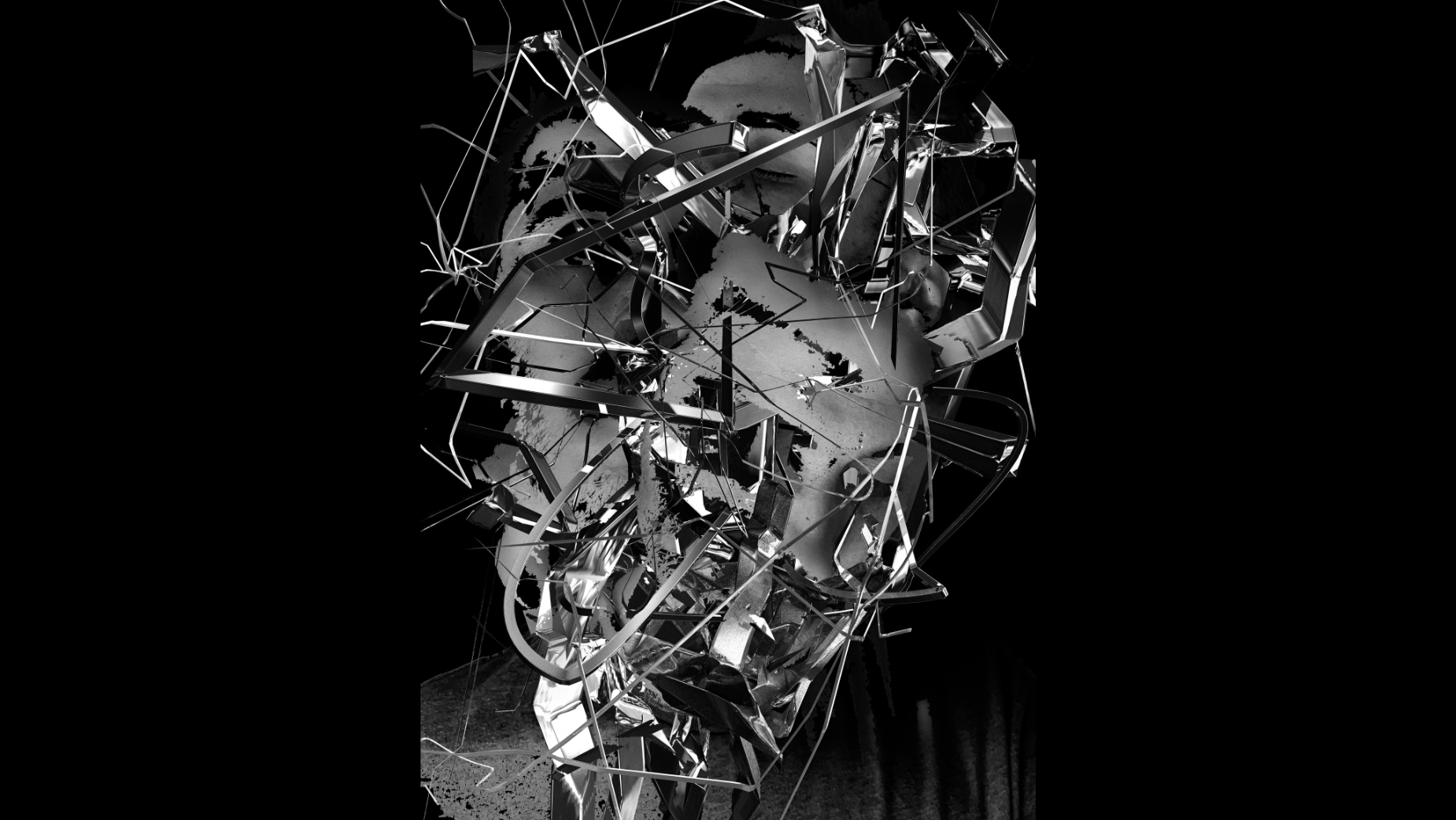
Above: self portrait of Pandagunda
From Palestine to Sweden, and from interior design to emotionally charged digital dreamscapes, Pandagunda’s journey defies easy categorisation. Born Ashraf (Ash) Khoffash, the artist has carved a space in the creative world that’s as distinctive as his moniker. Known for his VFX-led, surreal aesthetic — where colour distortion meets subconscious storytelling — his work spans album covers, live visuals and collaborations with names like Rihanna, Banks, Jónsi and Pat McGrath. But for Pandagunda, who’s represented by Octopus Inc, it’s less about the medium and more about the mystery. “At times I consider myself more of a curious person than an artist,” he ponders. LBB’s Alex Reeves caught up with him to explore what lies beneath the surface of his abstract realities.
LBB> How did your background in interior design shape your current work in digital and visual effects art?
Ash> My background in interior design helped me understand and apply the principles of design, like balance, contrast, and harmony, which I now use in all my creative work. It also taught me how to take abstract ideas and develop them into practical, visual solutions. Studying design made me more aware of how shapes, colours, and space work together. I also started to see abstract art differently. artists like [Wassily] Kandinsky made me think more deeply about how simple forms can create feeling or rhythm, and that still influences how I design today. Interior design also introduced me to 3D modelling and digital tools, which became my way into digital art.
LBB> Would you describe yourself more as a curious person than an artist? How does that curiosity manifest in your creative process?
Ash> Definitely. Curiosity has always been a big part of who I am. As a kid, I used to open up radios and TVs just to see how they worked. That got me into trouble more than once. My family would notice something was off and ask why the radio was taken apart or the TV wasn’t working properly. But I couldn’t help it. I just wanted to understand how things were built.
I still carry that same mindset into my creative work. I enjoy exploring how tools work and then discovering how I can utilise them in ways they weren’t originally intended. That often leads to unexpected and interesting results. This is one of the reasons I’m drawn to generative design and creative coding. It adds a layer of surprise and allows me to collaborate with the computer in a new way. Even when I’m using regular software, I experiment a lot. I try to push limits, break things, or bend the rules to see what happens. That curiosity doesn’t just shape the technical side of my work but also the concepts and ideas behind it. It keeps the process exciting and open-ended.
LBB> Having grown up in Palestine and now living in Sweden, how have these contrasting cultural environments influenced your visual language and themes?
Ash> That contrast has shaped almost everything about how I see and create. Growing up in Palestine was intense and often stressful, and my main escape was through screens: cinema, video games, anything visual. That’s where my imagination lived. After moving to Europe, particularly to Sweden, I began to view my own culture from a new perspective. I began to notice the depth and richness in Arabic storytelling, symbolism, and tradition. These were things I hadn’t fully appreciated before. Now I’m starting to think more about how I can explore that in my creative work. I’m interested in developing projects or collaborations that reflect those cultural elements and bring together both sides of my background. It’s something I’m planning to explore more intentionally in the future.
LBB> Your work blends hyper-real visuals with surreal distortions. What draws you to the space between dreams and reality?
Ash> A lot of it comes from cinema. Directors like David Lynch and Terrence Malick showed me that art doesn’t always have to follow a clear narrative or logic. It can be abstract, emotional, and still deeply meaningful. That opened up a new way of thinking for me, where the goal isn’t to explain something but to evoke a certain feeling or state of mind.
Visually, I’m drawn to the space between the real and the surreal because it feels honest in a way that reality alone sometimes doesn’t. Life isn’t always linear or easy to define. Memories shift, thoughts overlap, and emotions aren’t always clear. I try to reflect that visually by creating something that feels familiar but slightly off, like a dream you half-remember.
That aesthetic allows me to explore things I’m still thinking through, such as identity, time, place, and change, without needing to have all the answers. It gives me the freedom to be in that uncertain space and to turn those feelings into something visual.
LBB> You’ve collaborated with major artists like Rihanna and Jónsi (from Sigur Rós). What do you look for in a collaboration, and how do you maintain your creative voice on large-scale projects?
Ash> Collaborating with artists like Rihanna and Jónsi is an incredible experience. It pushes me to raise my own standards because the scale and impact are significant. For me, a good collaboration is built on mutual respect. It means being open to different ideas and trusting each other’s creative instincts. In large projects, there are always many voices and perspectives involved. What helps me maintain my creative voice is staying true to what I believe will make the work meaningful and strong. I don’t want to just fit in. I want to bring something unique that adds to the overall vision.
Clear communication is essential. When the team listens and values everyone’s input, it creates a space where I feel confident sharing my ideas and trying new things. That trust allows me to push creative boundaries while keeping the project cohesive.
Ultimately, collaboration is about striking a balance, incorporating my own style and ideas while supporting the broader vision. When that balance works, the outcome is richer and more exciting than anything I could create alone.
LBB> Walk us through your creative toolkit — how do you decide when to use 3D scanning, motion capture, photography, or a combination?
Ash> It really depends on the project, the budget, the timeline, and the effect I want to achieve. I like to use as many tools as possible because each one brings a different dimension to the work. For example, motion capture is excellent when I want to capture authentic human movement quickly. Tools like 3D scanning help me create detailed, realistic models of real objects or environments, which adds a lot of depth. Photography can bring an organic, tactile feel that’s hard to replicate digitally.
I also work extensively with software like Houdini, which enables me to blend these elements in creative ways, such as translating sound into motion. I’m always experimenting and combining different disciplines because it opens up new possibilities. Ultimately, it’s about choosing the tools that best serve the story or emotion I want to communicate, not just using technology for its own sake.
LBB> What’s your relationship with AI in your creative process?
Ash> At first, I was resistant, like many artists. It felt unfamiliar and a bit overwhelming. But AI is evolving fast, and now I see it as just another tool to help with practical tasks, not something I rely on for creative ideas. For example, motion capture used to be something only big studios could afford. Now, even though it is not perfect, you can do it with your phone. AI and similar technologies are making processes easier and more accessible. I don’t use AI often yet, but I’m looking forward to the future and the tools it will bring. Ideally, these tools will allow artists to focus more on the creative side while AI handles the technical, boring tasks.
That said, I hope the industry finds a way to avoid using artists’ copyrighted work without permission when training AI. It is really disappointing when that happens, and it makes many people want to avoid using AI altogether. AI is not just about creating images; it is a technology that can speed up many parts of the workflow, making work faster and more efficient.
I still believe creativity needs that human touch, the emotional spark, and intuition that AI cannot replace. Used thoughtfully, AI is a powerful assistant.
LBB> What’s been your most surprising or challenging project to date — and why?
Ash> Without a doubt, the project for The Sphere in Las Vegas with Solomun and Anyma was the most challenging. My dear friend Juan Azulay and I art directed the project together, and I also created the animation. We had just two weeks to produce a three-minute piece for a huge 40,000-square-foot screen. The scale, the rendering demands, and the tight deadline all felt overwhelming. It seemed almost impossible.
Those two weeks were intense — there were days when I got only an hour or two of sleep. But the adrenaline kept me going. Looking back, it was also really fun. I’m proud of what we achieved. That project showed me how much can be done when passion pushes past doubt and pressure.
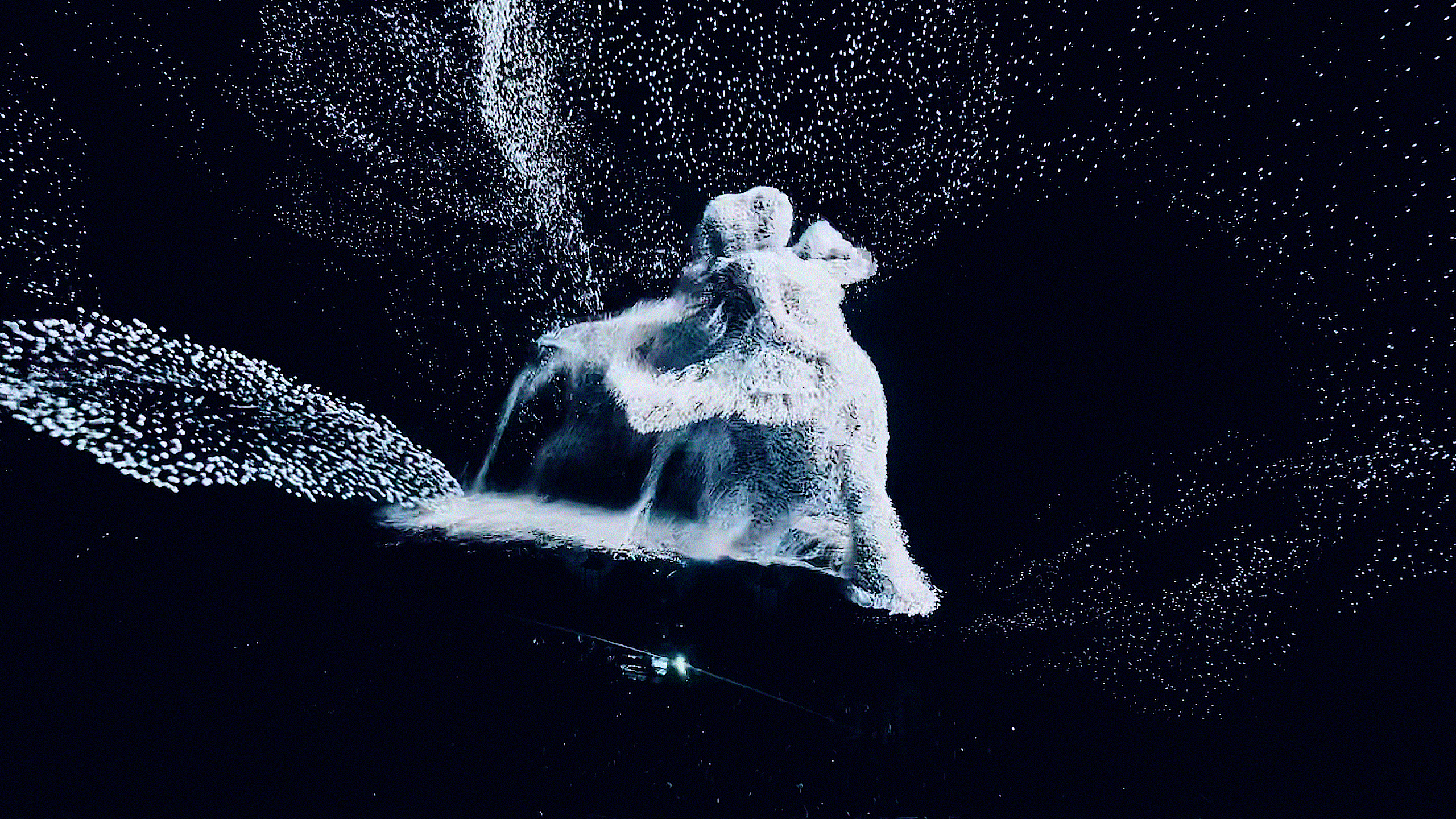
LBB> You once said there’s an “abstract reality beneath what we see.” Has your work brought you closer to understanding or expressing that hidden layer?
Ash> I don’t think there’s ever a point when we fully understand everything we feel or experience inside. To me, that’s what abstraction is: pieces of thoughts mixed with emotions and feelings. Sometimes we grasp it immediately, other times it takes a while, and sometimes we never fully comprehend them. Honestly, I don’t try to fully understand them either.
That’s why I’m drawn to the space between dreams and waking life. In dreams, even when things don’t make sense, we don’t question them. They just feel real. It’s only after we wake up that we realise how strange it was.
I like abstraction because it holds deep meaning and can create strong reactions in people. Art lets me explore those hidden layers – the parts words can’t fully capture but that we feel. That’s what I try to show in my work.
LBB> What do you hope audiences take away from your work - emotionally, intellectually, or subconsciously?
Ash> I want people to stop and really experience my work, to enjoy it without feeling the need to make sense of everything. Art doesn’t always have to be fully understood; it’s about what each person takes away from it in their own way. When it comes to shows, I want to give people a memorable experience that connects with the music and the moment. In the future, I hope to direct more music videos because that would let me bring together my ideas and visuals in a way that really speaks to what I want to express.
LBB> Would you ever consider directing in the traditional sense — behind the camera, on set?
Ash> Yes, definitely. That’s really my dream. I have so many ideas in my head that I haven’t had the chance to fully realise yet. Sometimes I feel like my digital artworks are sketches for something bigger, like what they could become if they were turned into a music video or a short film. I’d love to step into directing in a more traditional sense, building those worlds with a full team and bringing those ideas to life in a more immersive way. I think once that door opens, I wouldn’t want to go back.






